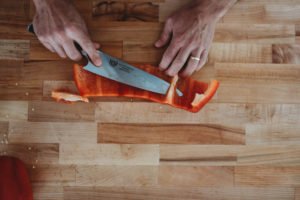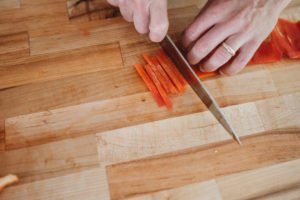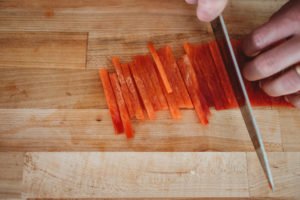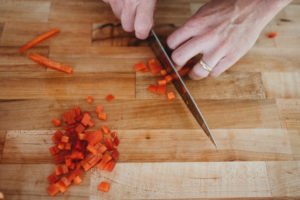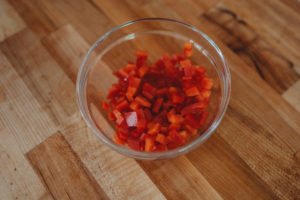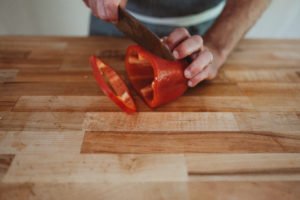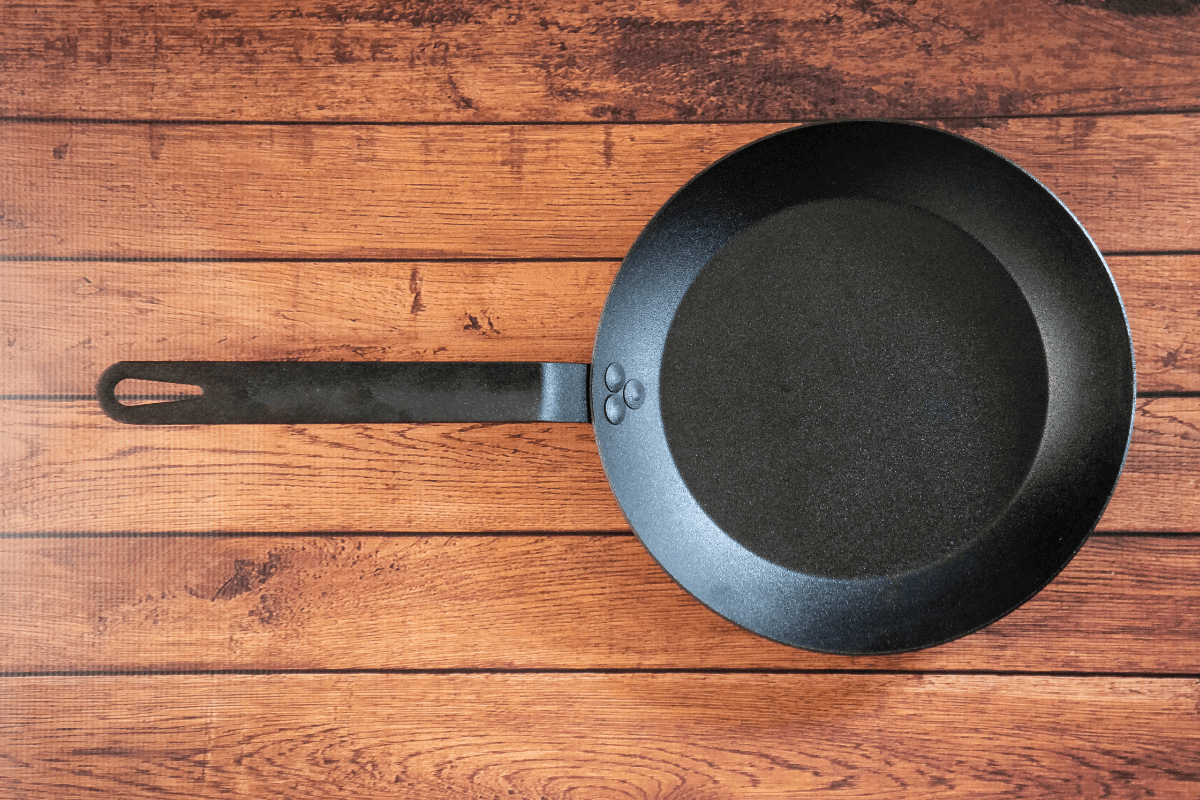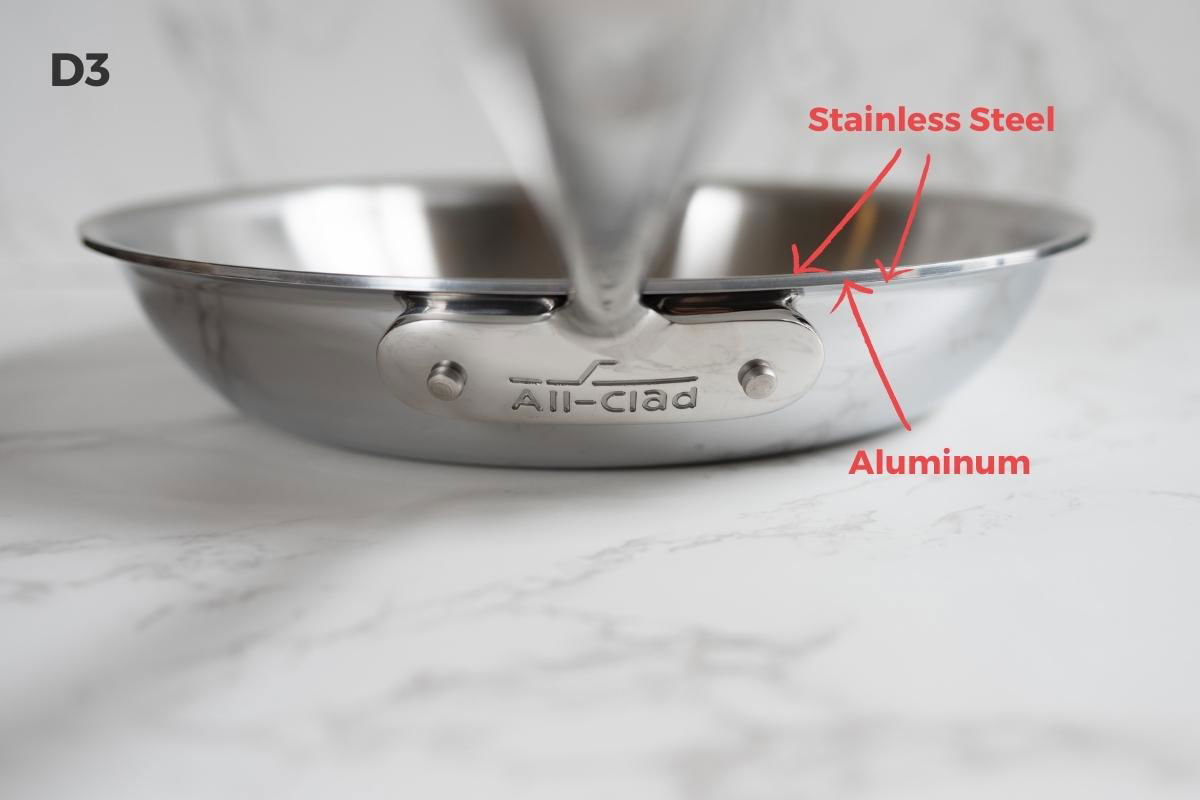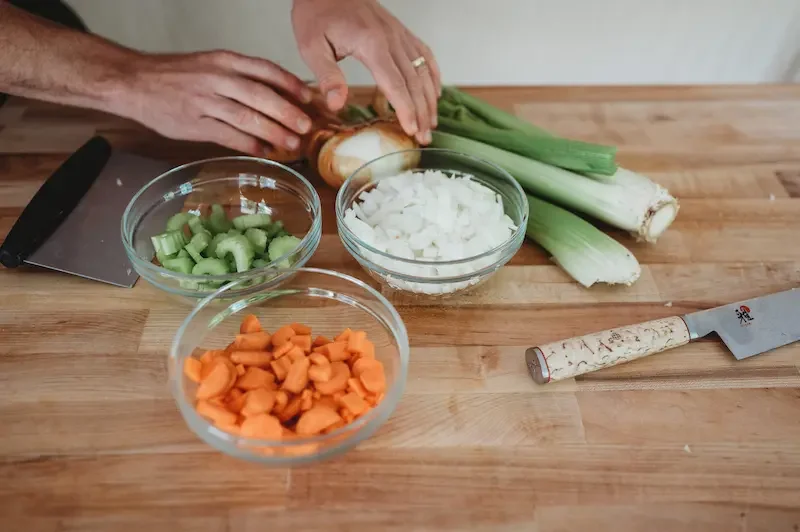Bell peppers are an incredibly versatile vegetable that I love to keep on hand to add to a variety of dishes. They are flavorful enough to shine on their own as the star of a recipe or can be used to punch up the flavor of everyday foods like eggs or potatoes.
While in culinary school, I was responsible for prepping bins upon bins of bell peppers because of how frequently they pop up in many different dishes. I’m thankful to have had professional instruction on how to cut these peppers in the most efficient way possible, and in this article, I’ll share all of those tips and tricks with you!
So, whether you’re making fajitas, kabobs, or just have some extra peppers on hand, let’s get into the best way to cut a bell pepper for your desired application!
In This Article
First and Foremost: Preparation
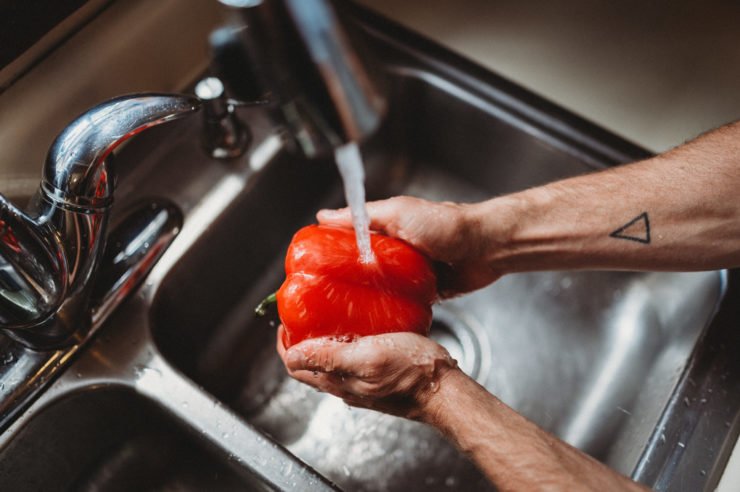
Pesticide residue, dirt, dust, and bacteria can all collect on your fruits and vegetables from harvest to the grocery store.
To begin, always start by washing your veggies. Rinse your bell pepper with cold or lukewarm water, and make sure to dry it thoroughly before moving on to cutting.
What You’ll Need:
- Cleaned and dried bell pepper
- A sharp chef knife
- Cutting Board
Be sure that you’re using a sharp knife and make sure your cutting board is stable on your countertop. Do not use a warped cutting board or one that refuses to stay put.
You are less likely to injure yourself with a sharp knife than with a dull one because less force is needed to cut the bell pepper. A stable cutting board will prevent shakiness and slippage, which could result in injury.

Pro Tip: A damp but rung-out paper towel underneath the cutting board will keep it in place.
Bell peppers are in the sweet pepper family and do not contain capsaicin (the compound that gives spicy peppers their heat). Therefore, gloves are unnecessary for protection against capsaicin transferrence when cutting bell peppers.
How to Cut a Bell Pepper
Into Strips
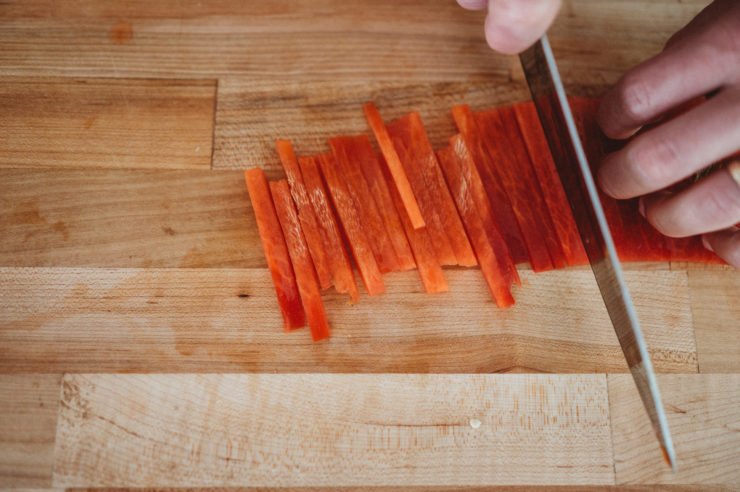
Strips of bell pepper are perfect for adding to your fajita mixture, sausage and pepper hoagies, or dipping into hummus! Cutting the pepper into strips is also the first building block toward dicing the bell pepper, or cutting it into chunks, for other applications.
To begin, place your washed and dried bell pepper horizontally onto your stable cutting board, with the stem side facing your knife.
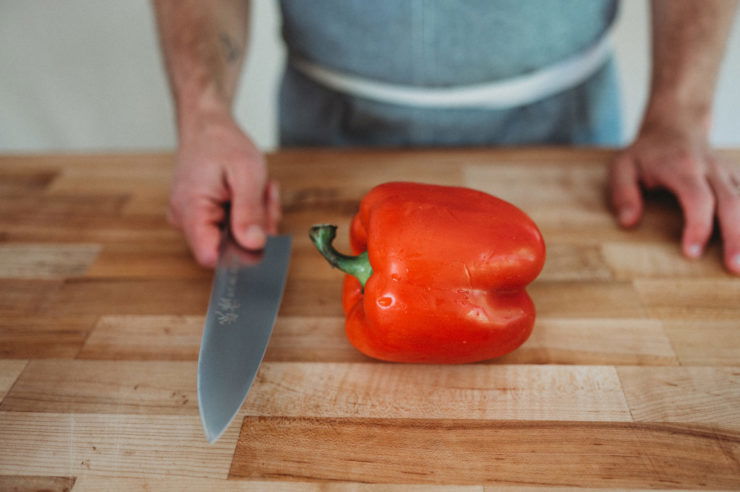
Hold the pepper with your non-dominant hand, and with the knife in your dominant hand, slice entirely through the stem portion of the pepper, as close to the stem as possible so as not to waste the bulbous top bits of bell pepper flesh that encircle the stem.
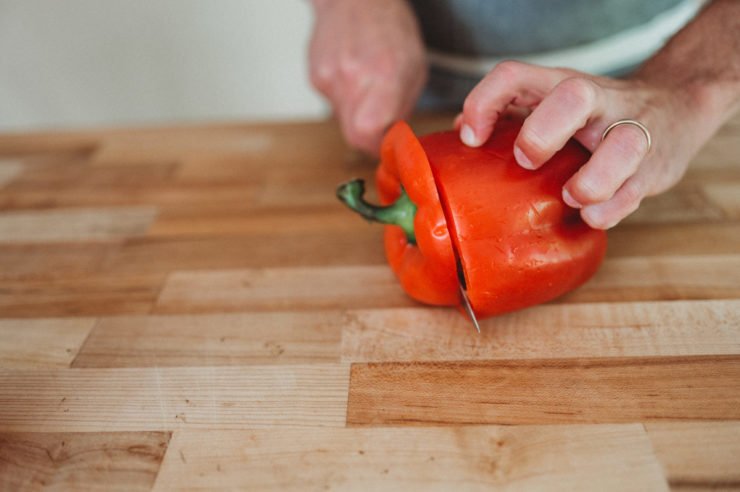
Turning the pepper around, cut off the bottom of the pepper as well. You will be left with a bell pepper tunnel with the core and seeds still attached through the middle.
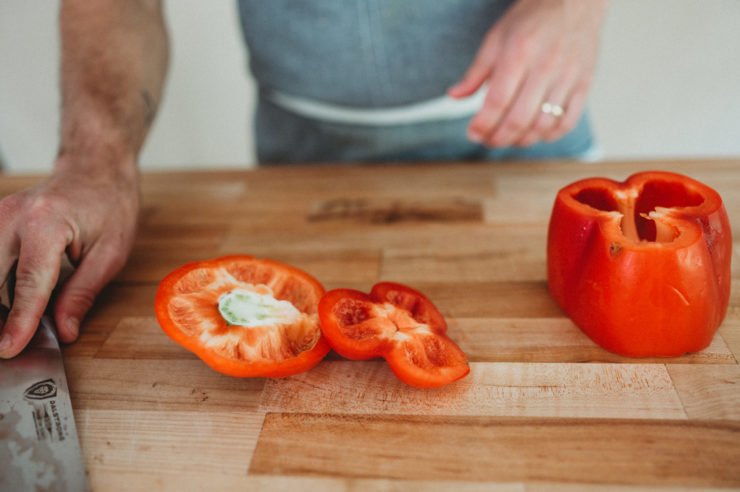
Now, reach into the pepper with your fingers and grasp the core and seeds from the end that the stem used to be attached to, remove and discard them.
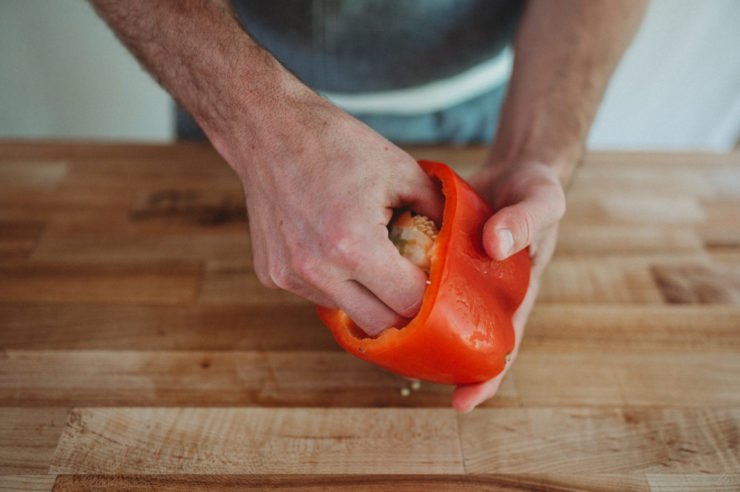

Pro-Tip: I find that if any seeds stick to the inner flesh of the pepper, firmly tapping the pepper against the cutting board will dislodge these seeds, and they will fall through to the cutting board where you can wipe them away.
Slice through the wall of the pepper on one side so that you can unroll the pepper and lay it flat against your cutting board, inside flesh facing upward.
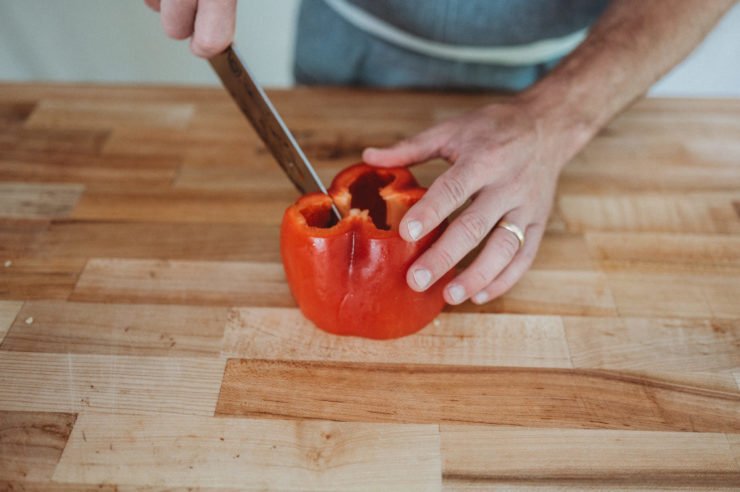
Run the tip of your knife between the pepper flesh and the white ribs to remove them.
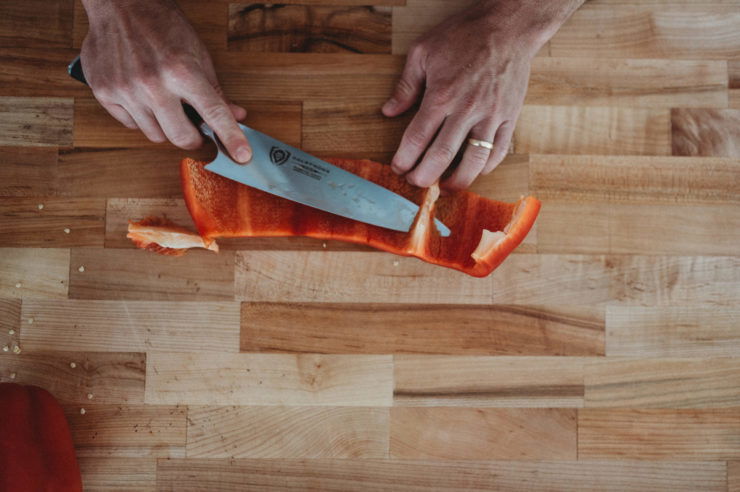
Now you are left with a cleaned rectangle of bell pepper that is optimal for slicing!
Roll the fingertips of your non-dominant hand under your first set of knuckles to form a flattened fist. This will protect your fingertips while creating a guide for your knife cuts.
Finally, cut the bell pepper along the shorter side into ¼ inch strips.
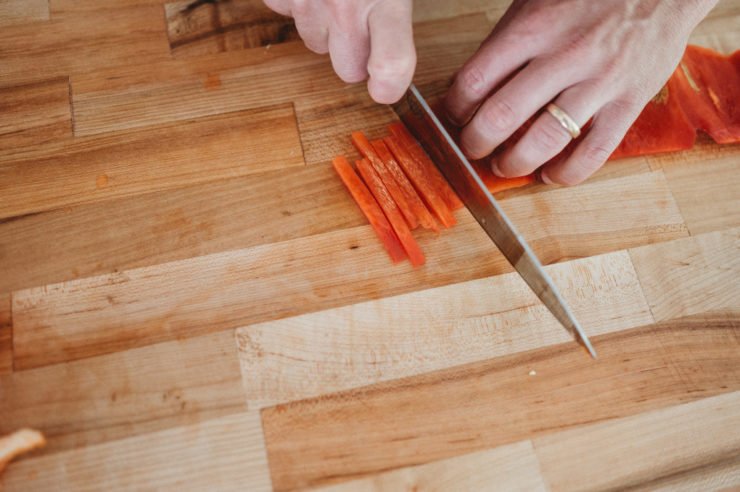

Pro-Tip: Instead of throwing away the bell pepper flesh that surrounded the stem, and the bottom of the pepper, dice up these small pieces and save them in a freezer bag to add to dishes!
Into Chunks
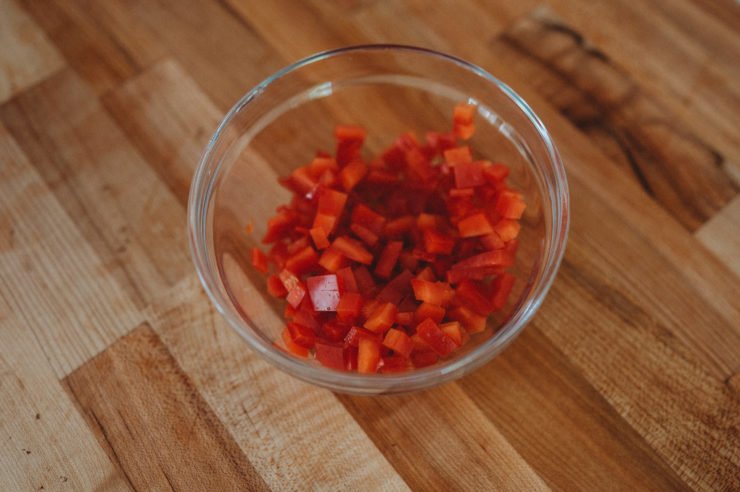
Bell pepper chunks can vary in size, you may desire larger pieces to match the size of the protein on your kabobs, or you may want smaller chunks to incorporate into breakfast potatoes.
To dice bell peppers, you will begin by following all of the steps in the previous section until you have slices of pepper.

Depending on the size of dice you are trying to achieve, adjust the thickness of the slices. For example, for kabobs, you may want chunks that are 1 in squares, so your slices should be 1 in thick. If you want a smaller dice, adjust your slices accordingly.
Once you have all of your bell pepper slices, create a bundle of them in your non-dominant hand. They can be on top of each other, but make sure they are lined up from end to end as much as possible.
Keeping your fingertips curled, cut through the bundle of peppers at the thickness matching the thickness of the slices to create square chunks.
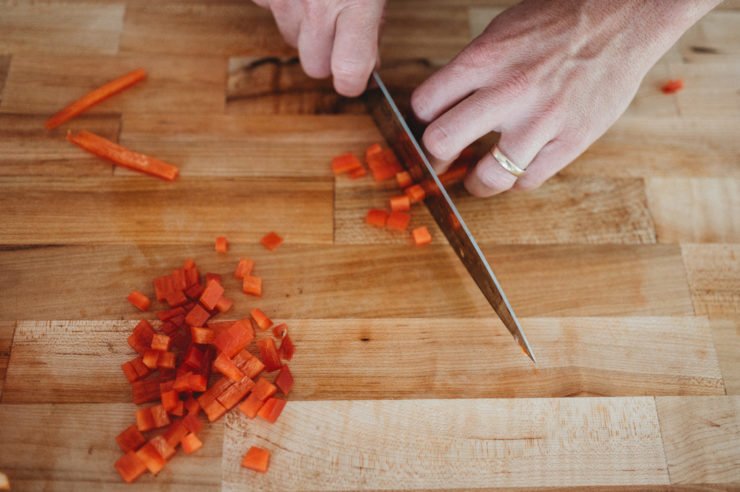
Into Rings
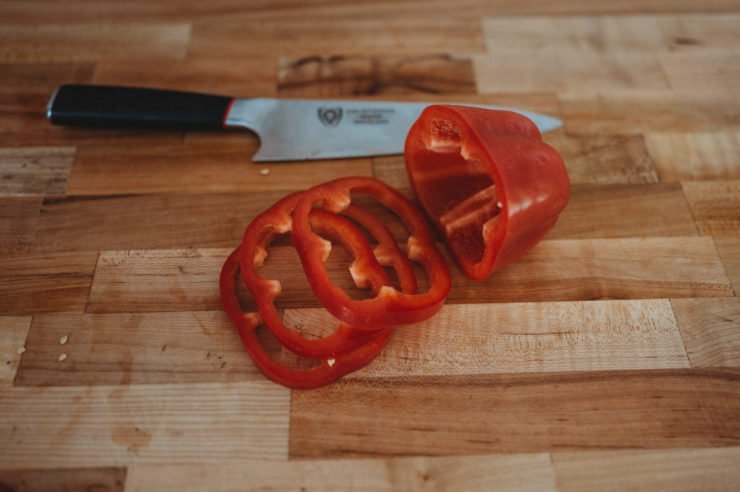
Bell pepper rings are not the most popular cut, but they have their uses!
Whether you’re looking for a new brunch idea, like eggs in bell pepper rings, or testing out onion ring alternatives, this cut is simple and perfect.
Place your washed and dried bell pepper horizontally onto your stable cutting board, with the stem side facing your knife.

Hold the pepper with your non-dominant hand, and with the knife in your dominant hand, slice entirely through the stem portion of the pepper, as close to the stem as possible.

Reach into the pepper with your fingers and remove the core and seeds.
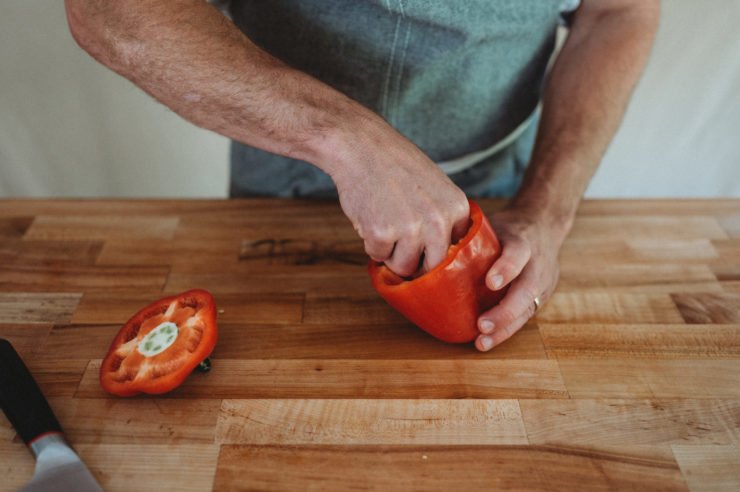
Tap the pepper, cut side down, against the cutting board to dislodge any seeds that may have fallen to the bottom of the pepper.
Now, with the pepper horizontal on the cutting board, slice through the whole pepper to create ½ inch rings.
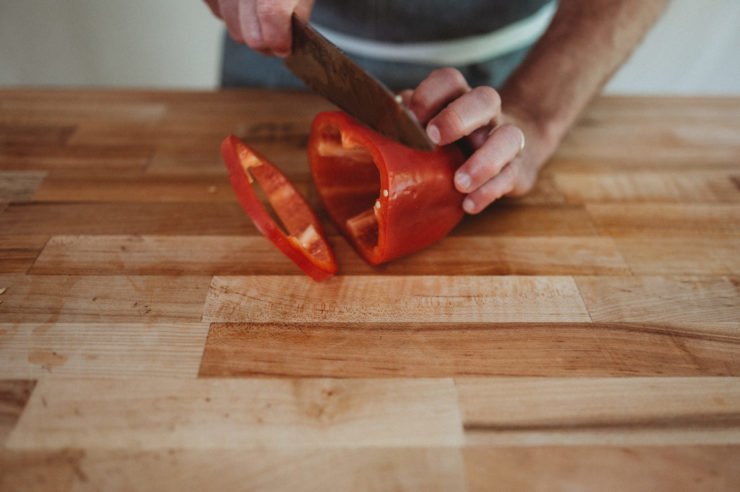
Either discard the bottom portion of the pepper or cut it up and save it in a freezer bag for future use.
If the bell pepper rings have a thick strip of white ribbing still attached, simply use the tip of your knife to slice off this unwanted portion.
For Stuffing
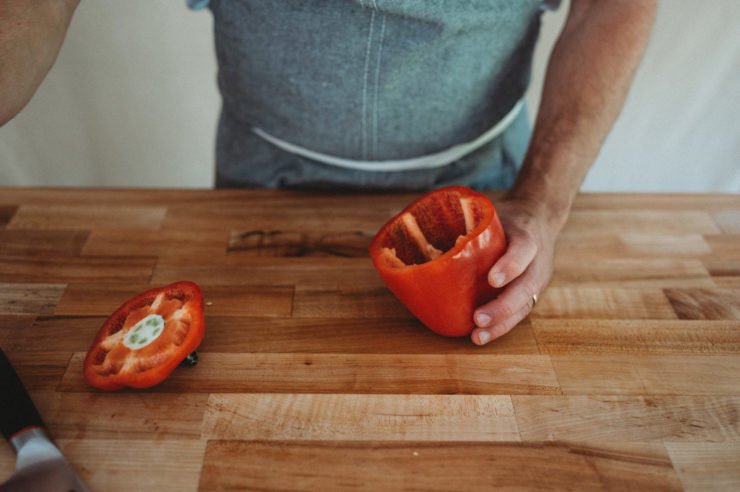
Stuffed peppers are delicious and versatile, and the preparation of the pepper for this dish is minimal.
Place your washed and dried bell pepper horizontally onto your stable cutting board, with the stem side facing your knife.
Hold the pepper with your non-dominant hand, and with the knife in your dominant hand, slice entirely through the stem portion of the pepper, as close to the stem as possible.
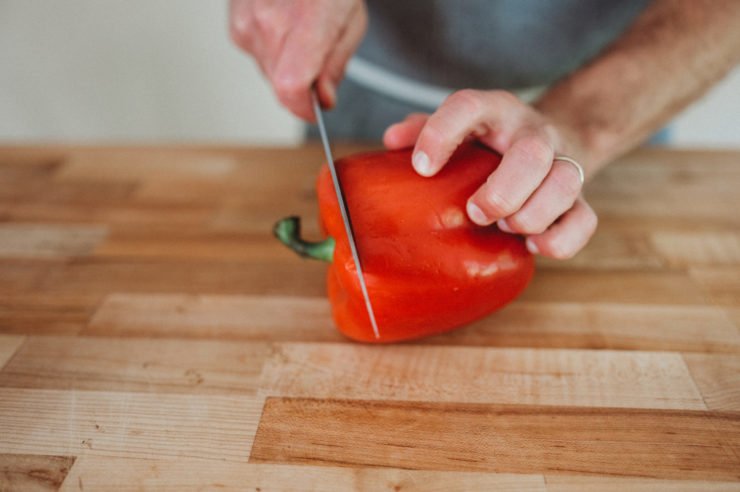
Reach into the pepper with your fingers and remove the core and seeds.

Tap the pepper, cut side down, against the cutting board to dislodge any seeds that may have fallen to the bottom of the pepper.
That’s it! Your cut bell pepper is the perfect vessel to stuff with all sorts of delicious fillings!
How To Select The Tastiest Bell Peppers At The Store
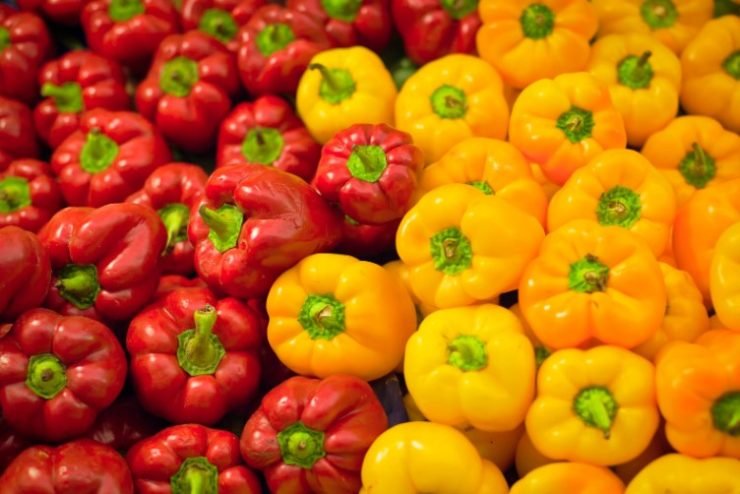
When choosing between the bell peppers available at the grocer, always look for firm peppers. You do not want to feel any soft or squishy spots across the flesh. The pepper should feel heavy in your hand and should appear smooth and unwrinkled.
How To Store Bell Peppers
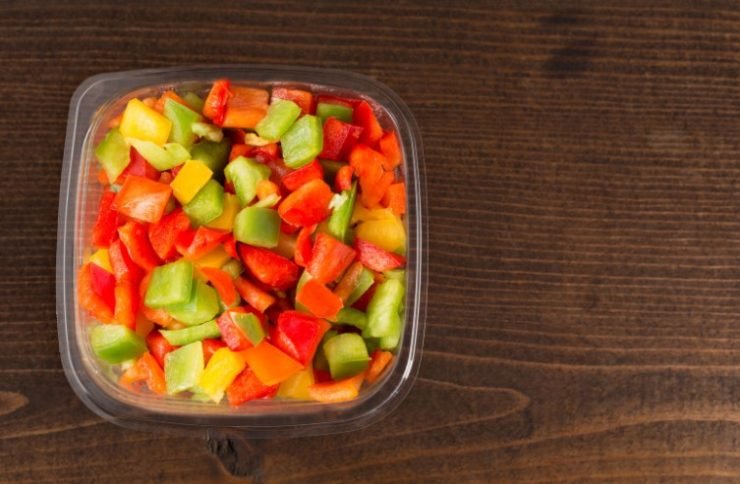
To store whole bell peppers, keep them in a produce bag in the crisper drawer of your refrigerator. They should last between 4-10 days.
To store cut bell peppers, place them in an airtight container lined with a dry paper towel to absorb excess moisture. Stored this way, cut bell peppers should last between 2-3 days in the fridge and up to 10 months.
Once you get comfortable with basic bell pepper prep, a great next step is to try your hand at making roasted peppers.
Print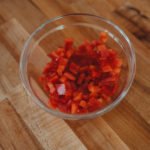
How To Cut A Bell Pepper
- Total Time: 5 minutes
- Yield: ½ cup per medium pepper, 1 cup per large pepper 1x
Description
Learn the best way to cut a bell pepper to achieve optimal cooking results no matter the dish you’re creating.
Ingredients
- 1 Bell Pepper
Instructions
For Strips
- Slice the top off of the washed and dried bell pepper, as close to the base of the stem as possible.

- Slice off the bottom of the bell pepper, just enough to create a hollow tunnel.

- Using your fingers, tear out the core of the bell pepper and seeds, tapping the pepper against the cutting board to dislodge and remaining seeds.

- Cut through one wall of the bell pepper flesh and unroll the pepper flat against the cutting board, skin side down.

- Trim away any remaining white ribbing from the rectangular bell pepper.

- Slice the bell pepper into ¼ inch thick strips.

For Chunks
- Follow steps 1-6 for cutting the bell pepper into strips, with the thickness of strips equalling the thickness of chunks you are looking to achieve.

- Line up the sliced end to end in a bundle in your non-dominant hand.

- Cut into the bundle at intervals equalling the thickness of the strips to create a square dice of bell pepper.

For Rings
- Slice the top off of the washed and dried bell pepper, as close to the base of the stem as possible.

- Using your fingers, tear out the core of the bell pepper and seeds, tapping the cut end of the pepper against the cutting board to dislodge and remaining seeds.

- Hold the pepper horizontally against the cutting board and cut through the hollow pepper in ½ inch intervals to create bell pepper rings.

- Discard the remaining bottom of the bell pepper that does not have a hollow middle.
- Use the tip of your knife to slice off any remaining white ribbing from the interior of the pepper rings.
For Stuffing
- Slice the top off of the washed and dried bell pepper, as close to the base of the stem as possible.

- Using your fingers, tear out the core of the bell pepper and seeds, tapping the cut end of the pepper against the cutting board to dislodge and remaining seeds.

- Prep Time: 5 minutes
- Category: Knife Skills
- Cuisine: Various; from Mexican to Indian to Greek and beyond
Keywords: how to cut bell pepper, how to cut a pepper, sweet pepper
Roasted red bell peppers are perfect for preserving. So once you taste a roasted red pepper, fresh mozzarella, prosciutto, and arugula sandwich, you’ll want to keep those soft, sweet, and delectable peppers on hand at all times!




